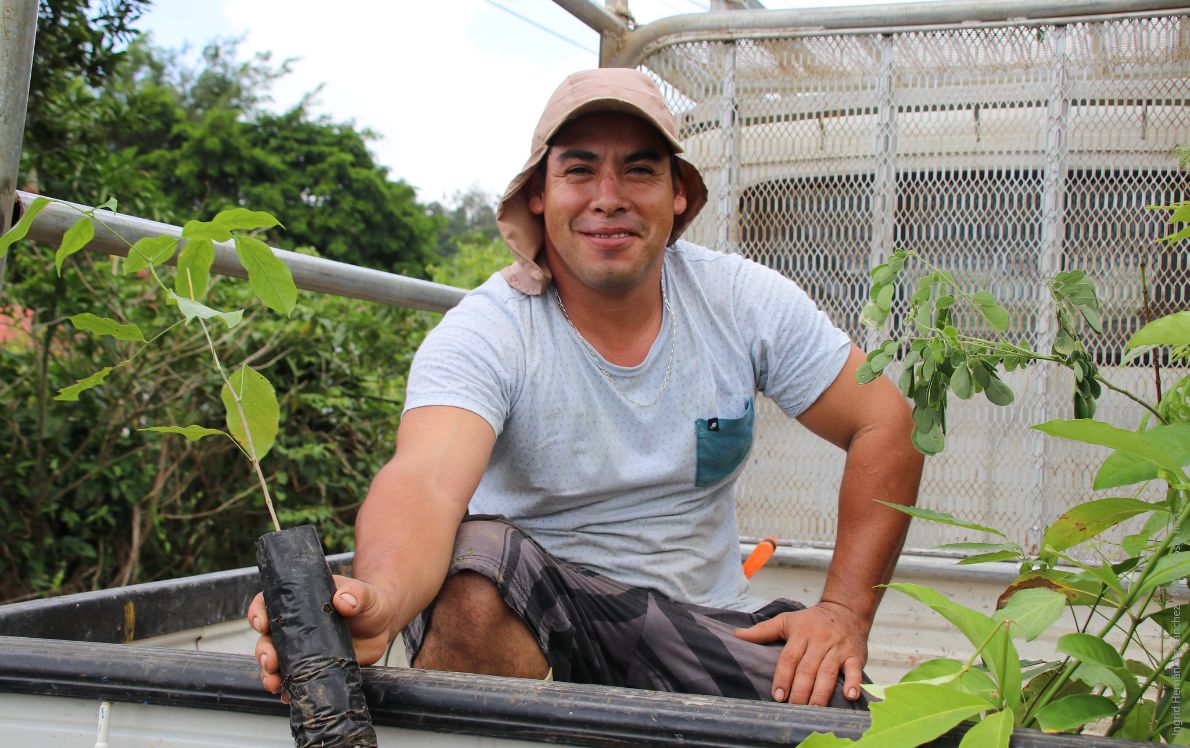
Costa Rica, a demonstrated leader in ecosystem conservation, is achieving astonishing results through Results-based Payments for REDD+. What are these results, and how have they been measured?
In January of last year, Costa Rica received USD 23.9 million for the verified achievement of pre-agreed forest conservation and forest fire prevention results. Now, less than two years after the project initiation, a second payment of an extra USD 13.3 million has been disbursed to Costa Rica’s National Forestry Financing Fund (known as FONAFIFO). The combined payments correspond to 80% delivery of the project budget intended for these activities, in the form of tangible forest protection, natural regeneration, and agroforestry systems results in private lands and indigenous territories with integrated social and environmental safeguards compliance.
Here is a quick brief on how the project works:
The funds were obtained by the Ministry of Environment and Energy (known as MINAE) for emissions reductions from the forest sector in 2014 and 2015 under the Green Climate Fund’s (GCF) pilot program on Results-Based Payments (RBP) for REDD+. Costa Rica’s GCF REDD+ RBP project is being implemented by UNDP, acting as the GCF Accredited Entity. The activities of this project directly benefit thousands of Costa Ricans through:
(i) strengthening the existing Payment for Environmental Services (PES) scheme under FONAFIFO,
(ii) expanding the PES scheme in Indigenous Territories, and
(iii) strengthening forest fire prevention measures in rural communities through the National System of Conservation Areas (known as SINAC).
Now let's highlight some project features:
- Most of the project funds are channeled to FONAFIFO through UNDP’s innovative Performance-based Payment modality.
- A robust verification process undertaken by an independent assessor underpins the implementation of this project, including analysis of 34 specific, measurable, achievable, result-based, and timebound (SMART) payment-linked indicators.
- The SMART indicators are divided into three categories:
- Exclusion criteria indicators to ensure compliance with social and environmental safeguards.
- Quantitative indicators that measure the results.
- Bonus and penalty indicators to incentivize social inclusion (i.e., gender transformative and youth-sensitive actions).
- The project provides no cash advances, enabling agile implementation with low administrative costs.
- In addition to verifying the achievement of the SMART indicators, the independent assessor makes recommendations for improvements that are later implemented by FONAFIFO and SINAC to strengthen results in the next cycle of verification.
- Digital innovation plays a key role in measuring and validating results. For example, geospatial data has been used to verify conservation results, contract areas, compliance with protection/reforestation contracts, and the location and level of forest fire damage from the previous year. Since everything can be checked with spatial data, this entails a very high confidence level.
What results have been achieved during the second year of implementation?
- 156,464 ha under forest protection active contracts within the PES Program, of which:
- 56,055 ha (35%) are in districts with a Very Low Social Development Index (SDI)
- 29,972 ha (19%) are under contracts formalized with women owners or co-owners of properties
- 2819 ha (1,8%) belong to young owners, and
- 32,643 ha (20%) belong to smallholders in properties with contracts of less than 50 hectares.
- 9,635.5 ha under natural regeneration active contracts within the PES Program benefiting 900 forest landowners. These contracts include:
- 2,251 ha (23,3%) are in districts with a Very Low Social Development Index (SDI)
- 699 ha (7,2%) are under contracts formalized with women owners or co-owners of properties
- 145 ha (1,5%) belong to young owners, and
- 1865 ha (19,3%) belong to smallholders in properties with contracts of less than 50 hectares.
- 95% of the Indigenous Territories have interest letters confirming their participation in the free, prior, informed, and consent process to build a Forest and Territorial Environmental Plan to access climate finance resources benefiting 12,000 people in 16 indigenous territories. This is a prerequisite underpinned by an exclusion criteria indicator under the PBPA that ensures compliance with social safeguards and indigenous rights. The results on those territories are the following:
- 42,289 ha in Indigenous Territories were under forest protection active contracts within the PES Program
- 880 ha in Indigenous Territories were under natural regeneration active contracts within the PES Program
- 485,202 trees in Indigenous Territories under active agroforestry systems contracts.
Costa Rica’s REDD+ RBP project has three more years of implementation ahead, where subsequent verifications under the UNDP Performance-based payment agreement will be carried out. The entire project budget dedicated to PES activities in private lands has been exhausted; however, in the following years, the project will continue to verify results for PES in indigenous territories and for fire prevention, where there is still a budget to support these activities.
Regardless of the remaining budget of the project, the creation and operationalization of a robust mechanism to track and verify forest protection, natural regeneration, and agroforestry results, as established by the Performance-based payment agreement, will allow Costa Rica to channel future climate finance to support the PES program through FONAFIFO and the forest fire prevention strategy through SINAC. For example, the UNDP’s Performance-based payment agreement already in place could be used to channel further funds from carbon market transactions since Costa Rica has demonstrated leadership in this arena as one of the countries with more significant progress towards certifying its REDD+ results under the REDD+ Environmental Excellence Standard to access high-integrity carbon markets in 2023.


